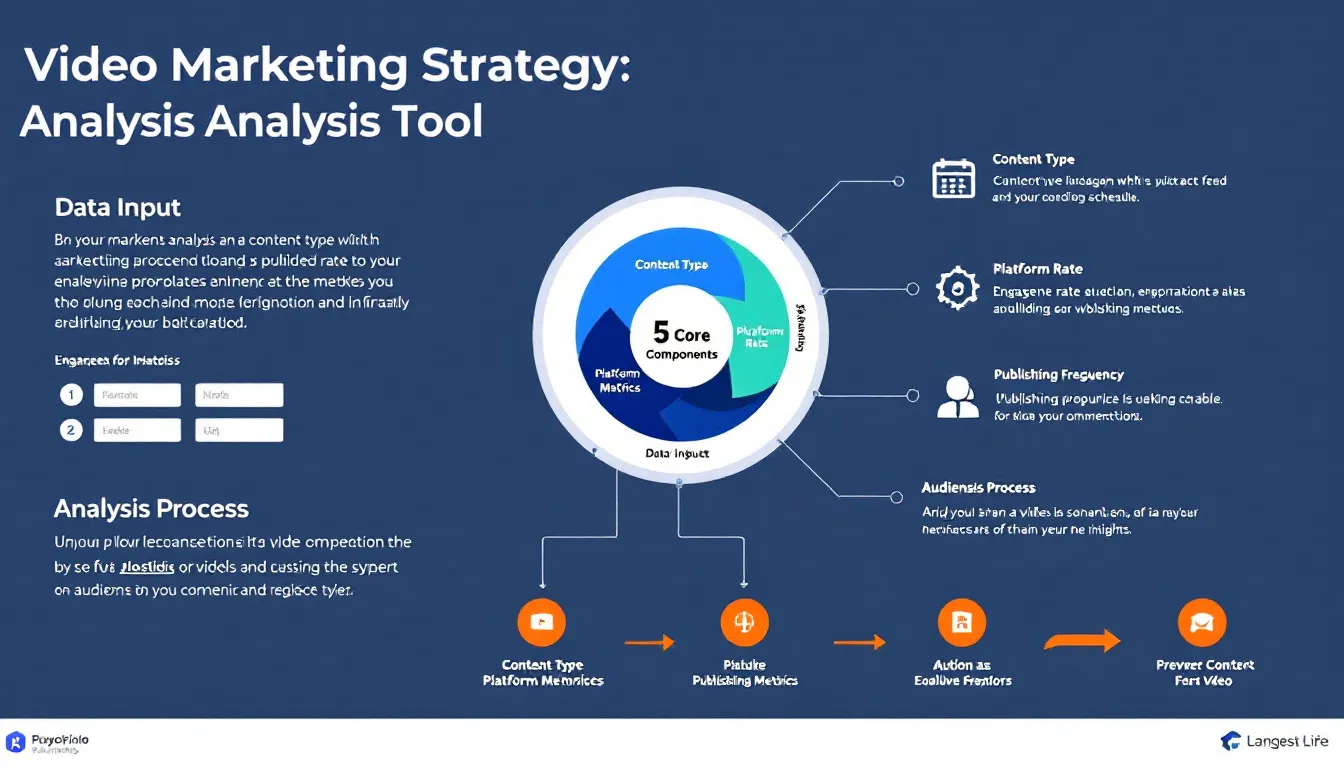Is this tool helpful?
How to Use the Video Marketing Strategy Analysis Tool Effectively
Our Video Marketing Strategy Analysis Tool helps businesses evaluate and compare their video marketing efforts with competitors. Here’s a detailed guide on using each field effectively:
1. Company Name
Enter your company’s official name. For example:
- GreenTech Solutions Inc.
- Wellness Warrior Supplements
2. Competitor Analysis
List your main competitors, separated by commas. Include direct competitors in your market space. For example:
- For a fitness app: Nike Training Club, Peloton Digital, Fitbod, Strava
- For an e-commerce platform: Shopify, WooCommerce, BigCommerce, Magento
3. Industry Selection
Specify your primary industry to ensure relevant analysis. Examples:
- SaaS (Software as a Service)
- Sustainable Fashion
4. Time Frame Selection
Define the analysis period. Recommended timeframes:
- Last quarter (3 months)
- Previous fiscal year
5. Platform Selection
Specify the social media platforms for analysis. Common combinations:
- YouTube, LinkedIn, Instagram
- TikTok, YouTube Shorts, Instagram Reels
Understanding Video Marketing Strategy Analysis
Video marketing strategy analysis is a systematic approach to evaluating and comparing video content performance across different platforms and competitors. This tool helps businesses identify gaps, opportunities, and trends in their video marketing efforts.
Core Components of Analysis
- Content type distribution
- Platform-specific performance metrics
- Engagement rate analysis
- Publishing frequency patterns
- Audience response indicators
Benefits of Using the Video Marketing Strategy Analysis Tool
1. Competitive Intelligence
Gain valuable insights into competitor strategies:
- Video content themes and formats
- Platform preferences and distribution patterns
- Engagement patterns and audience response
- Content gap identification
2. Strategic Planning
Improve your video marketing strategy through:
- Data-driven decision making
- Resource allocation optimization
- Content calendar planning
- Platform-specific strategy development
3. Performance Optimization
Enhance your video content performance:
- Benchmark against industry leaders
- Identify successful content patterns
- Optimize posting schedules
- Improve engagement metrics
Solving Specific Marketing Challenges
Content Strategy Alignment
The tool helps address common content strategy challenges:
- Platform selection optimization
- Content type diversification
- Audience engagement improvement
- Resource allocation efficiency
Performance Measurement
Track and analyze key performance indicators:
- Engagement rates
- View-to-completion ratios
- Share and comment metrics
- Audience growth patterns
Practical Applications and Use Cases
Case Study 1: E-commerce Brand
A fashion retailer used the tool to analyze competitors’ video strategies:
- Identified product showcase patterns
- Optimized video length for different platforms
- Improved engagement by 45%
- Developed platform-specific content strategies
Case Study 2: B2B Software Company
A SaaS provider enhanced their video marketing through competitor analysis:
- Discovered optimal tutorial video formats
- Implemented successful educational content strategies
- Increased lead generation by 30%
- Improved customer onboarding efficiency
Frequently Asked Questions
How often should I conduct a video marketing strategy analysis?
Conduct analysis quarterly to stay current with market trends and competitor strategies. Additional analysis may be beneficial when launching new products or entering new markets.
Which social media platforms should I focus on?
Focus on platforms where your target audience is most active. Consider your industry, product type, and customer demographics when selecting platforms for analysis.
What metrics are most important for video marketing analysis?
Key metrics include engagement rate, view duration, subscriber growth, sharing rate, and conversion metrics specific to your business objectives.
How can I improve my video content based on competitor analysis?
Use insights to optimize video length, content themes, posting frequency, and engagement strategies. Focus on successful elements while maintaining your brand’s unique voice.
Should I analyze international competitors?
Include international competitors if you operate globally or plan to expand internationally. This provides insights into diverse market approaches and content strategies.
How can I measure ROI from video marketing efforts?
Track conversion metrics, lead generation, sales attribution, and brand awareness indicators. Compare these against resource investment and industry benchmarks.
What types of video content should I analyze?
Analyze various content types including product demos, tutorials, brand stories, customer testimonials, and educational content to identify successful formats in your industry.
How can I adapt successful competitor strategies for my brand?
Identify core elements of successful strategies and adapt them to align with your brand voice, audience preferences, and business objectives.
Important Disclaimer
The calculations, results, and content provided by our tools are not guaranteed to be accurate, complete, or reliable. Users are responsible for verifying and interpreting the results. Our content and tools may contain errors, biases, or inconsistencies. We reserve the right to save inputs and outputs from our tools for the purposes of error debugging, bias identification, and performance improvement. External companies providing AI models used in our tools may also save and process data in accordance with their own policies. By using our tools, you consent to this data collection and processing. We reserve the right to limit the usage of our tools based on current usability factors. By using our tools, you acknowledge that you have read, understood, and agreed to this disclaimer. You accept the inherent risks and limitations associated with the use of our tools and services.







